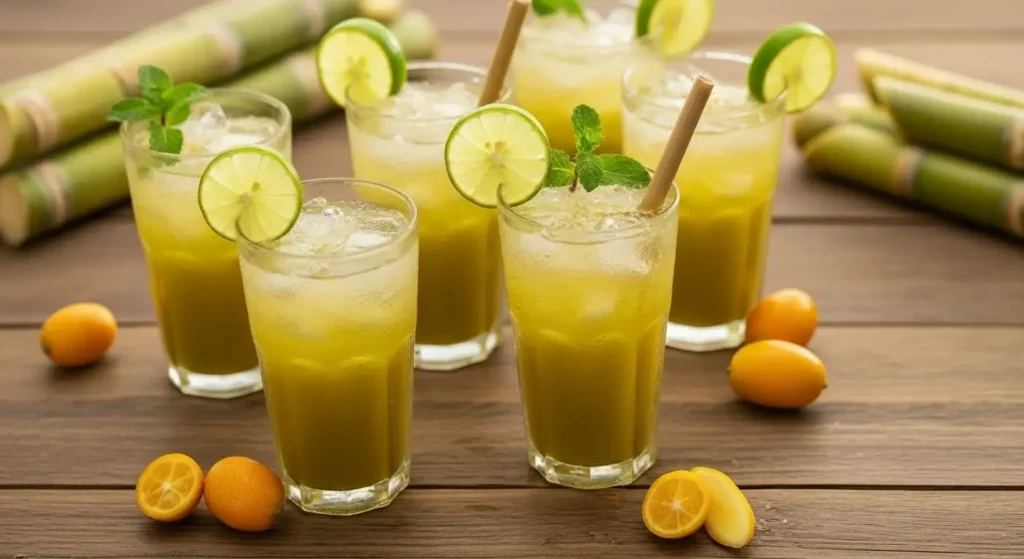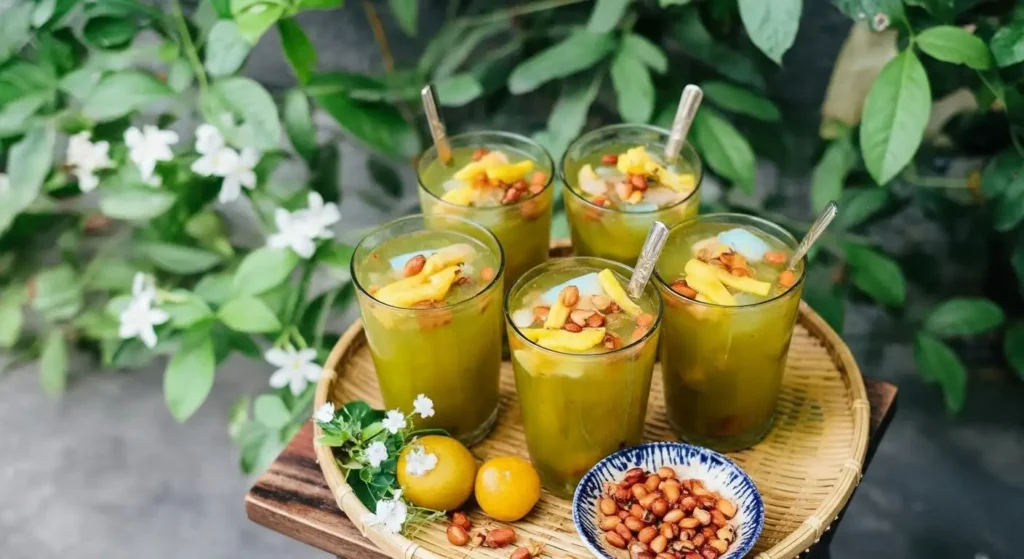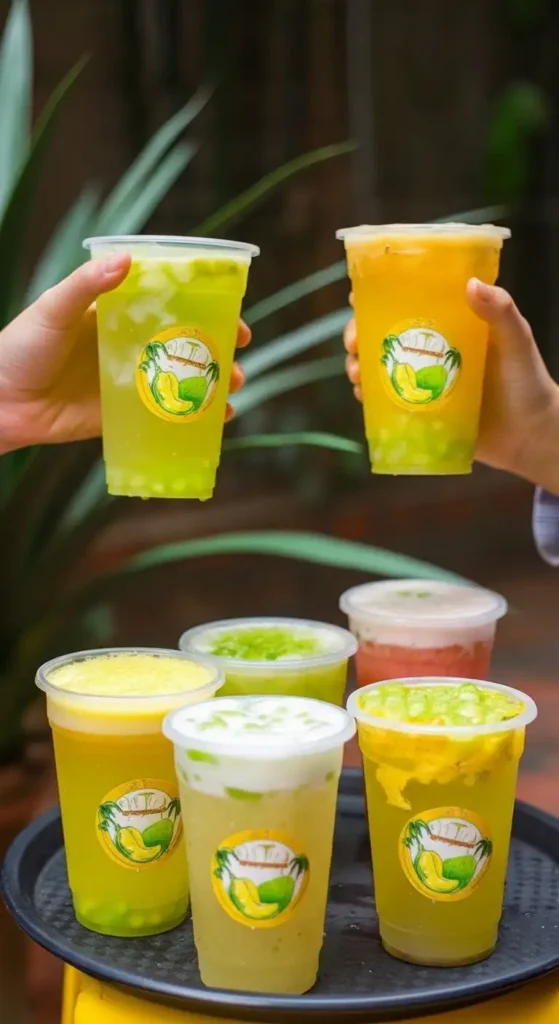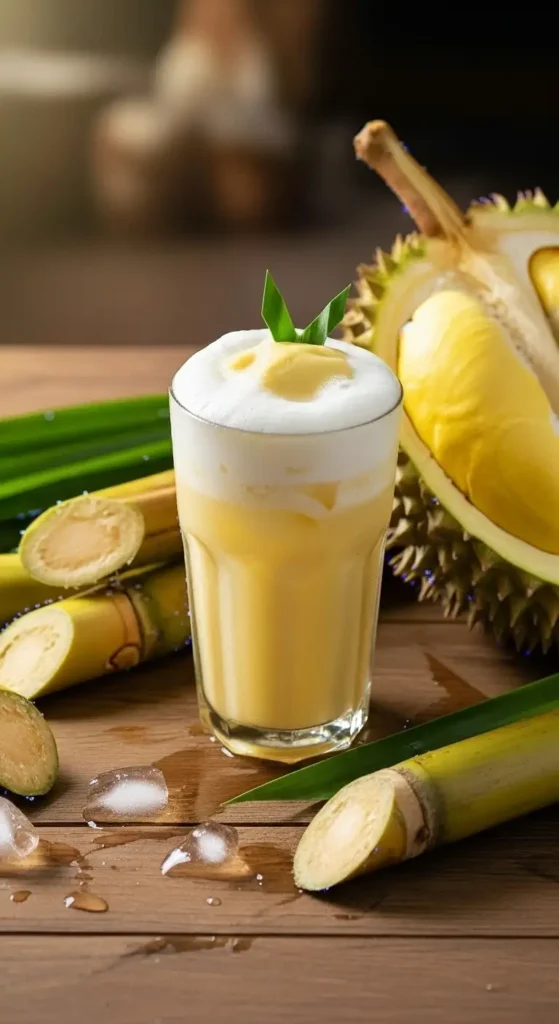Nước Mía (pronounced nuu-uk mee-ah), or fresh sugarcane juice, is arguably the quintessential street drink of Vietnam. It is a cultural icon, a natural energy booster, and the perfect antidote to the country’s tropical heat. You can find its distinctive, brightly colored stalls and powerful crushing machines on nearly every street corner, making it an essential part of the daily Vietnamese experience.

The Basics of Nước Mía
What is it?
Nước Mía is simply the juice extracted directly from the stalks of sugarcane. It is a natural, unrefined, and highly refreshing beverage.
Key Characteristics:
Preparation: The drink is always made to order. Vendors feed peeled sugarcane stalks through a specialized electric or manual press (often visible on the cart) multiple times to extract the juice. The process is a fascinating street-side show.
Flavor Profile: Despite its origin, Nước Mía is surprisingly not cloyingly sweet. It has a light, grassy, and crisp flavor with a natural sweetness that is well-balanced.
Price and Popularity: It is one of the cheapest and most popular drinks in Vietnam, beloved by locals and tourists alike for its affordability and instant cooling effect.
Health Benefits:
Often considered a healthy, natural energy drink, Nước Mía is rich in electrolytes, antioxidants, and simple sugars that provide an instant energy boost and aid in hydration, making it ideal for the hot climate.
Types and Variations of Nước Mía
While the core ingredient is always sugarcane, Vietnamese vendors have become creative in blending the juice with local fruits and flavors, resulting in popular variations.
Nước Mía Tinh Khiết (Pure Sugarcane Juice):
The most basic form, featuring only the freshly pressed sugarcane juice, served over ice. It has the purest, most traditional “grassy” sweetness.
Nước Mía Tắc (Sugarcane Juice with Kumquat/Calamansi):
This is the most common and classic variation. A few kumquats (tắc) or calamansi (a small sour citrus fruit similar to lime) are pressed along with the sugarcane or squeezed into the finished juice. The citrus acidity adds a delightful, refreshing tang that cuts the sweetness and enhances the overall flavor.
Modern Fruit-Infused Nước Mía:
To appeal to younger drinkers, modern stalls now offer many fruit-infused versions, often blended:
Nước Mía Dừa (Sugarcane with Coconut Milk): A creamy, rich version that blends the sweetness of the cane with the distinct creaminess of coconut milk.
Nước Mía Sầu Riêng (Sugarcane with Durian): A highly aromatic and polarizing blend, combining the sweet juice with the pungent, custardy king of fruits.
Nước Mía Bơ (Sugarcane with Avocado): A creamy smoothie-like concoction.
Nước Mía with Toppings (Topping-based Nước Mía):
Popular in modern shops, these resemble bubble tea but with sugarcane juice. They are topped with ingredients like salted roasted peanuts, fresh coconut shavings, jackfruit strips, or black chewy “pearls.”

The Best Way to Drink Nước Mía
The enjoyment of Nước Mía is tied directly to the street-side experience and the climate.
Served Ice Cold: Nước Mía is always served over a generous amount of ice (đá). The initial coldness is crucial for beating the heat. As the ice slowly melts, it slightly dilutes the sugar, mellowing the taste and making it even more refreshing.
Straight from the Stall: The juice should be consumed immediately after pressing. Sugarcane juice loses its fresh flavor quickly, so watching the stalks go into the machine and receiving the final, frothing drink is part of the experience.
With Street Food: Locals often pair Nước Mía with savory street snacks. The fresh, cooling quality of the juice perfectly balances the heat, saltiness, or spice of local foods like Bánh Tráng Nướng (grilled rice paper) or various skewers.
Regional Differences
While Nước Mía is ubiquitous across Vietnam, subtle preferences in preparation exist from North to South, mainly regarding additives.
| Region | Primary Style and Characteristics | Key Additives/Flavors |
|---|---|---|
| Northern Vietnam (Hanoi, etc.) | The North tends to favor the Kumquat (Tắc/Quất) variation (Nước Mía Tắc) or the pure juice. The addition of the small, tart citrus is the classic northern enhancement. In some older, more traditional areas, the taste might be slightly more "raw" or "grassy." | Kumquat (Tắc or Quất), Ginger (less common, usually for a hot drink). |
| Central Vietnam (Hue, Da Nang, etc.) | The style here is generally consistent with the North's citrus preference, leaning toward a balance of sweet and sour. It's a widely consumed beverage, though fewer highly-specialized modern variations are historically linked to the region compared to the South. | Kumquat/Lime. |
| Southern Vietnam (Ho Chi Minh City, Mekong Delta) | The South is where modern innovation and rich, tropical flavor blends thrive. Due to the hotter climate and abundance of tropical fruits, vendors experiment more with creamy and complex additions. | Coconut Milk (Nước Cốt Dừa), Durian (Sầu Riêng), Jackfruit, Pineapple. The Southern version often feels like a richer, sweeter beverage compared to the North's simple, tart-enhanced drink. |




